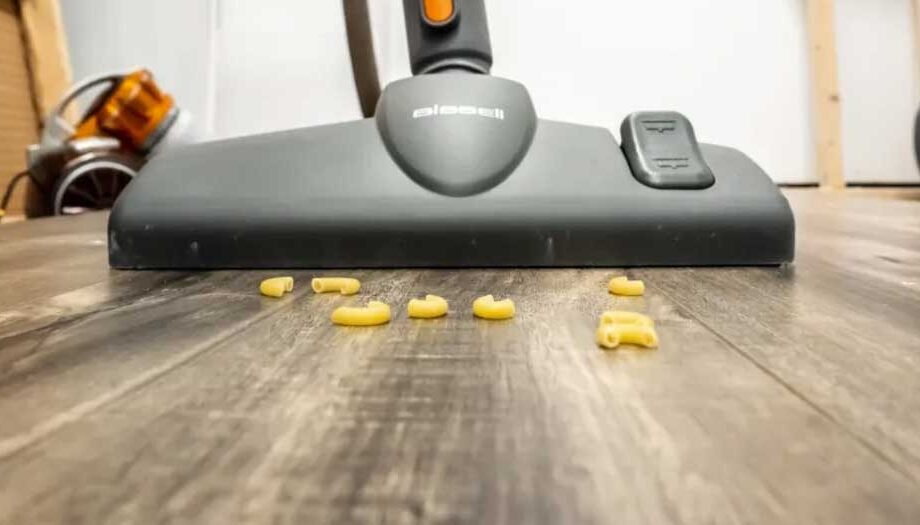Replaceable brushes and equipment called Dyson attachments snap into either a corded or cordless vacuum. These attachments can be used to clean a broad range of surfaces and problems, such as delicate upholstery, tough grime, hair tufts, and difficult-to-reach areas in your house or vehicle. Learn more about the most popular Dyson attachments and the things they can clean by reading about them. We’ll also explain how to attach these attachments to both corded and cordless Dyson vacuums, as they work with nearly all of the company’s models.
Things to Be Aware of
There are multiple things you need to know before using a Dyson vacuum for hardwood floors.
To suction dirt and debris out of confined crevices and difficult-to-reach places, use the crevice tool. Use the gentle dusting brush to dust lamps, blinds, and other delicate surfaces.
The tangle-free turbine tool can be used to remove hair from carpets and upholstered furniture. For cleaning hard surfaces like tile and wood, use the articulating floor tool instead.
Press the red button located at the base of the handle to attach an attachment to your vacuum. After attaching the hose to the handle’s top, slide on your attachment.
How to Use the Simple Dyson Attachments
1. Crevice Tool to Vacuum Corners
To vacuum tight spaces and corners, select the crevice tool. The long, narrow crevice tool has a 45° aperture at the attachment’s end. Cleaning tight spaces and narrow crevices, such as those under furniture, between couch cushions, and under car seats, is made simple by the small, angular aperture. Press the angled opening of the crevice tool up against the surface you’re cleaning. You can safely use the crevice tool on stone, metal, wood, or textiles. But perhaps other tools are more effective at removing dirt from fabric.
2. Fragile Surfaces
To clean blinds and other fragile surfaces, use the soft dusting brush. The soft dusting brush is a cylindrical utensil with flexible nylon bristles all around it. This makes it possible for the brush to delicately clean sensitive surfaces like tapestries, blinds, curtains, lampshades, keyboards, and mirrors of dirt and light debris. It’s ideal for dusting the hard surfaces in your car and house as well. A tiny soft dusting brush is also available, and it’s excellent for cleaning confined spaces. Additionally, Dyson produces a dusting brush that won’t scratch delicate surfaces like TV and computer screens. Its brush is gentler and smaller. Rinse the brush with water and allow it to air dry for cleaning.
3. Tangle Free Tool
Select the turbine tool that eliminates tangles to remove hair from upholstery. The flat, rectangular attachment with two rotating brush heads is the tangle-free turbine tool. When you move the tool back and forth across carpets, rugs, pet beds, upholstered furniture, and other fabric surfaces, the revolving brushes help keep hair from getting tangled in it
4. Combination Tools
Hard and soft surfaces can be readily vacuumed with the combo tool. The combo tool combines the features of the brush and crevice attachments with a broad nozzle and retractable brush. This makes it simple to move between the instruments and suction a range of surfaces in a single cleaning session. To clean confined areas, just slide the brush up using the nozzle. Then, to vacuum delicate surfaces like upholstery, move the brush over the nozzle.
5. Flat Out Floor Tool
To clean hard surfaces, use the flat-out or articulating floor tool. For cleaning under appliances and furniture, the articulating floor tool and the flat-out floor tool both have thin designs. Because it effortlessly bends to maintain suction on uneven terrain and features soft nylon brushes to collect dust and debris, the articulating floor is ideal for cleaning hard surfaces like tile and wood. The flat-out floor tool cleans carpets and hard surfaces as well, but it functions more like the articulating floor tool. Although Dyson suggests that the articulating floor tool is effective on carpets, delicate or thin rugs could not benefit from the nylon brush’s use.
6. Stair Tool
To clean carpeted stairs and difficult-to-reach areas, use the stair tool. The large but narrow entrance of Dyson’s stair tool attachment makes it easier to remove hair and grime from carpeted areas that are harder to reach. Because of this, it’s ideal for vacuuming stairs and small spaces.
7. Extensions
To extend the reach of any Dyson attachment, add the extension hose. With only a quick snap, you can extend the reach of your corded or cordless vacuum by 22 to 24 inches (55–61 cm). Every Dyson attachment works with it, so you can clean high, low, and difficult-to-reach areas in your house and vehicle.
Conclusion
With the docking station that comes with every Dyson vacuum cleaner, you can easily keep your cleaner next to a location where you can charge your electrical device.
You’ll need a location, like a closet, that is close to a power outlet so you can start charging. You will have room to put your vacuum cleaner in the closet-style section while the power outlet charges it.

